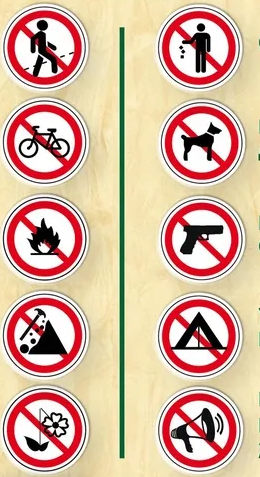Features
Why should you go to Kazakhstan?
It is worth visiting Kazakhstan at least because this country manages to combine three in one: scale, diversity and surprise. The landscapes look like they were filmed for a science fiction movie.
The steppe stretches to the horizon, and the sky seems endless. It is a rare feeling when you feel small, but not in a bad way, but as a part of something huge and calm.
Kazakh culture is warm and open: guests are greeted like old friends. National holidays such as Nauryz are vibrant, with music, dancing and traditional games. Kazakhs are genuinely happy to see guests: they will invite you for tea, feed you baursaks, and ask how you are doing. The hospitality here is the most sincere – a tradition from nomadic times. Beshbarmak, kazy, baursaks, kumys, pilaf – dishes with a rich taste that are associated with history and lifestyle. Even ordinary tea here turns into a small ritual.
Ancient mausoleums and cities like Turkestan or Otyrar are the living history of the Great Silk Road.
A rich heritage of different stages of life of the Kazakh people in cities: monumental architecture and interesting museums.
For lovers of active recreation, there are plenty of opportunities:
- Trekking in the Alatau Mountains, skiing in Shymbulak, horseback riding tours across the steppe.
- Desert jeep tours and trips to nature reserves where kulans and argali live.
There are as many as 10 nature reserves in Kazakhstan, rich in natural beauty, diverse flora and fauna, as well as unique routes especially for tourists.
Traveling in Kazakhstan is still relatively inexpensive.
Tourism here is not as mass as in Europe or Turkey, so you can enjoy nature and culture without the crowds.
Kazakhstan is a place where in one day you can meet an eagle in the mountains, have lunch in a yurt and in the evening find yourself in a modern metropolis like Almaty or Shymkent. Tourism in Kazakhstan is aimed at protecting and demonstrating the cultural heritage so carefully preserved by our ancestors. Every action, every taste of a national dish and the pattern of national clothing are the result of painstaking recreation of national values.
When is the best time to visit Kazakhstan?
The travel season will be the busiest in spring (March – May) and autumn (September – October). During these periods, the weather is most comfortable for traveling: moderate temperatures and picturesque landscapes. In summer in Kazakhstan, especially in the south, it is very hot, and in winter it is cold. However, at any time of the year, travelers will find something to do during their stay:
- Spring – the Nauryz holiday, the blossoming of fruit trees.
- Summer – the opening of cultural events, concerts, as well as for swimming and beach holidays.
- Autumn – great weather for active recreation, hiking and excursions.
- Winter – the opportunity to enjoy winter holidays in mountain resorts, especially suitable for lovers of winter sports.
What do you need to know before visiting Kazakhstan?
Language: The official language is Kazakh, but Russian is widely spoken. English is less common.
People in Kazakhstan are friendly and open-minded and ready to help. There is no language barrier: locals speak Russian fluently. If you get lost, get lost or something happens, do not hesitate to ask for help. On the other hand, travelers should be wary of taxi drivers or local vendors. They often quote inflated prices or do not give change, so before the trip it is worth finding out the price ranges from video reviews, or consulting with your tour operator.
Currency: Kazakhstani tenge.
In the cities, both cards and cash are accepted almost everywhere. There are many currency exchange points in the city centers, airports and train stations. You can exchange dollars, rubles, yuan and euros.
Currency declaration: Amounts over the equivalent of $10,000 must be declared upon entry and exit.
Antiques: It is prohibited to export cultural property without permission. At the checkpoint, the customs officer may ask you to show him handicrafts and souvenirs that you have purchased to ensure that you are not illegally exporting items of cultural value or antiques. If you are taking such items out of the country, you must have the proper documentation with you.
Climate: Kazakhstan is a country with a continental climate. In winter, the temperature can drop below -30°C, and in summer it can reach +40°C.
Water: In large cities, tap water is safe to drink, but it is better to drink bottled water.
Use of drones and cameras: Drone flights require special permission. Violation of this rule may result in the confiscation of equipment and fines. To use cameras, tripods and flashes, you must check permission at the place of visit. Use may be subject to a fee or may be prohibited altogether.
Rules for visiting cultural and religious sites
When visiting any sites, you should take into account the peculiarities of the country you are visiting. It is best to wear comfortable and practical clothes and shoes for any excursions and sightseeing. The main rules for visiting cultural sites, such as museums and nature reserves, include keeping quiet, treating exhibits with care, banning food and drinks, and prohibiting smoking and drinking alcohol on the premises. In addition, you should avoid loud conversations, running around, and other behavior that may disturb other visitors or damage exhibits.
Kazakhstan is a secular state, but respect for Muslim traditions is encouraged, especially in rural areas. Avoid revealing clothing in such places. When visiting mausoleums and mosques, try to wear clothes that cover your shoulders and legs (if you are wearing a T-shirt and shorts). Some religious sites provide capes for tourists.

Rules of conduct in mountainous areas and during hikes

In the warm season in the mountains, be sure to use sunscreen and wear a Panama hat or cap. Even if it seems not hot, the sun does not spare anyone. In autumn and spring, there are many ticks in the mountains. To protect yourself, wear high shoes and socks that cover your ankles.
As for visiting mountains, nature reserves and national parks, it is worth following a number of rules to protect the environment and the comfort of other vacationers:
- Don’t ignore the weather forecast.
- Take warm clothes with you, even if it’s hot at the foot of the mountains.
- The group should not split up, the walking pace is set by the weakest participant in the hike.
- The group should not be too large, otherwise it will inevitably split into several small subgroups with their own leader. The hike leader will not be able to keep track of such a large number of people.
- Observe the so-called “time factor”: leave for the route on time so that you have time to complete the day’s hike, set up tents and cook dinner before dark.
- Alcohol is strictly prohibited on the hike.
- Try to walk only along paths, do not trample the vegetation even more.
- Observe the silence, learn to listen to it and appreciate the sounds of nature.
- Do not interfere with natural processes and the lives of animals: do not destroy anthills, do not approach bird nests and animal burrows.
- Do not try to “save” the animal you find.
- You cannot collect flowers, seeds, berries, mushrooms.
- Do not throw unextinguished cigarettes and matches in the forest.
